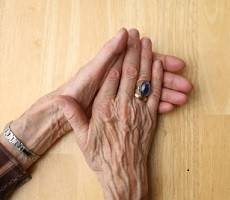March 30, 2015
Gamification remains a mystery to employees and unused by many firms
 Although it’s currently one of the most talked about workplace ideas, gamification remains a mystery to many workers and even HR professionals keen on the idea are probably not doing much about it. Those are two of the findings of a report from consultancy Penna based on interviews with 2,000 HR directors and employees. The study set out to explore how well senior HR professionals understood gamification, its uses and their perception of the barriers to adoption. Researchers also asked employees about their level of ‘everyday engagement’ with gamification and whether they recognise it as a concept. Over half (52 percent) of HR directors claim to be ‘massively interested’ in the idea although 44 percent also agreed that their organisation was ‘not at all interested’. Remarkably the survey also found that 89 percent of employees don’t even know what it is.
Although it’s currently one of the most talked about workplace ideas, gamification remains a mystery to many workers and even HR professionals keen on the idea are probably not doing much about it. Those are two of the findings of a report from consultancy Penna based on interviews with 2,000 HR directors and employees. The study set out to explore how well senior HR professionals understood gamification, its uses and their perception of the barriers to adoption. Researchers also asked employees about their level of ‘everyday engagement’ with gamification and whether they recognise it as a concept. Over half (52 percent) of HR directors claim to be ‘massively interested’ in the idea although 44 percent also agreed that their organisation was ‘not at all interested’. Remarkably the survey also found that 89 percent of employees don’t even know what it is.



























March 31, 2015
Time to move on from the anachronistic display screen equipment regulations
by Mark Eltringham • Comment, Legal news, Wellbeing, Workplace design
Not much of a guide to milking a Friesian
The European Display Screen Equipment Regulations were introduced in 1992 as a way of improving the posture and wellbeing of people working on computers in the office. That’s a long time ago. Too long, in fact. Here’s a list of thing that have happened since then – 1. The Internet. Actually, we can stop there. Any piece of workplace legislation that predates the Internet almost certainly won’t be fit for purpose, not least one that is based on how we should work with computers. Yet there it all is on the Health and Safety Executive (HSE) website. It’s all so hopelessly out of date, it’s like starting a farm using an Altamira cave painting as your guide. At the most straightforward level, you can take an image from one of the published guides such as this (below) and play a little game of spot the anachronism.
More →